Travel Japan: Experiencing Okinawa’s Double Life
Â
At the start of February I dragged my hands from under the kotatsu just long enough to click ‘buy’ on flights to Okinawa as a congratulations to myself for surviving my first Japanese January. I have just returned from said weekend bringing the sun with me (you’re welcome) and thought it only fair to share the experience so you can defrost vicariously through my sunny weekend…oh alright, you got me, I fully intend to gloat, but hopefully it will serve as inspiration for your own island adventures.
KIX to Naha is a very easy two hour flight, and with just a ten minute (1200円) taxi from the airport to downtown Naha you can catch the evening flight after school and be on Naha’s main drag, Kokusai-dori, in perfect time to guzzle down some taco-rice before moving onto the main city’s bars and clubs to sample the indigenous and dangerous awamori liquor. There are plenty of budget places to stay in Naha, many around Kokusai-dori, but we were very pleased with Osaru-no Oyado Monkey’s Inn which was a stone’s throw from Tomari port, and a fifteen minute walk from Kokusai-dori. Not only a great location, but a steal at 1500円 a night, and the charming proprietor from Osaka will give you a lift back to the airport for 1000円 whilst regaling you with tales of jet-skiing from Nishinomiya to Suma beach!
Day 1
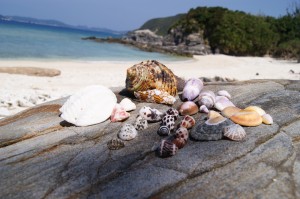 After hitting Naha’s late night haunts upon arrival and playing a lot of ping pong in one bar, our first full day needed to be suitably relaxing. Tokashiki Island is a tropical paradise just 35 minutes by high-speed ferry from Tomari wharf. If you decide to stay on the island your accommodation will pick you up from the terminal; for day trippers there’s a shuttle bus to the beautiful Aharen beach area, or if you want to explore more of the island then you can rent a car or scooter (don’t rent a bicycle unless you want a very good work out). We opted for the lazy option and hopped on the ten minute bus which zipped through the mountainous spine of the island and deposited us in sleepy Aharen village. The driver gave us the choice of a 3 or 4:30pm return once he had pointed out the one konbini and restaurant which may or may not have been open for business that day…We certainly weren’t in Kansai anymore.
After hitting Naha’s late night haunts upon arrival and playing a lot of ping pong in one bar, our first full day needed to be suitably relaxing. Tokashiki Island is a tropical paradise just 35 minutes by high-speed ferry from Tomari wharf. If you decide to stay on the island your accommodation will pick you up from the terminal; for day trippers there’s a shuttle bus to the beautiful Aharen beach area, or if you want to explore more of the island then you can rent a car or scooter (don’t rent a bicycle unless you want a very good work out). We opted for the lazy option and hopped on the ten minute bus which zipped through the mountainous spine of the island and deposited us in sleepy Aharen village. The driver gave us the choice of a 3 or 4:30pm return once he had pointed out the one konbini and restaurant which may or may not have been open for business that day…We certainly weren’t in Kansai anymore.
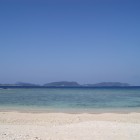 Incredibly popular in summer, at the beginning of March, Aharen was almost deserted, with only crowds of friendly stray cats and a few other day trippers to keep us company.
Incredibly popular in summer, at the beginning of March, Aharen was almost deserted, with only crowds of friendly stray cats and a few other day trippers to keep us company.
We spent the morning scrambling across the headland, struggling to imagine the horrors of invasion that this idyll faced not so long ago, before discovering a second, smaller, pebbly beach where young and old alike can while away the hours collecting shells and corals or poke around in the rock pools.
Beachcombing is hungry work and once our pockets were bulging with seashells we returned to the village, praying for the one shack-like restaurant to be open. Not only was it open, but the shabby exterior hid a truly excellent beach café serving up fresh local sashimi, Okinawa soba and perfect karaage. The local Orion beer to wash down the meal gave our lunch that real holiday feeling and was probably somewhat to blame for our post lunch dip in the clear turquoise waters. The water was incredibly clear and certainly warm enough for Brits used to the North Sea, but not for the locals who wait till the warmer months to snorkel and dive in the bay.
Day 2
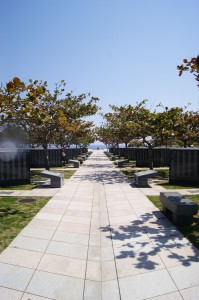 All sporting minor sun burn, we designated Saturday as a day of culture and main island exploration. We picked up a car from OTS rental at Tomari wharf (it would come to just under 10,000 円 between three for two days, including petrol and tolls) and headed south. The Okinawa Prefectural Peace Memorial Park is the largest war memorial in Okinawa. It includes a museum whose exhibits cover Okinawa’s pre-war history, the Battle of Okinawa and post-war Okinawa under U.S. military occupation. The museum is very informative and presents a balanced view on Okinawa’s transformation from Ryukyu Kingdom, through devastating war, to the cultural mélange it is today. You walk through the exhibits and learn chronologically about Okinawa’s complex relationship with both mainland Japan and the international community, before the facts of the Battle of Okinawa are presented along with photo evidence.
All sporting minor sun burn, we designated Saturday as a day of culture and main island exploration. We picked up a car from OTS rental at Tomari wharf (it would come to just under 10,000 円 between three for two days, including petrol and tolls) and headed south. The Okinawa Prefectural Peace Memorial Park is the largest war memorial in Okinawa. It includes a museum whose exhibits cover Okinawa’s pre-war history, the Battle of Okinawa and post-war Okinawa under U.S. military occupation. The museum is very informative and presents a balanced view on Okinawa’s transformation from Ryukyu Kingdom, through devastating war, to the cultural mélange it is today. You walk through the exhibits and learn chronologically about Okinawa’s complex relationship with both mainland Japan and the international community, before the facts of the Battle of Okinawa are presented along with photo evidence.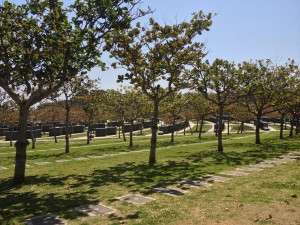 In the age of the image one might argue that we have become inured to war, and although the photographs in the museum were harrowing, it wasn’t until the penultimate exhibition that the horror of what happened on the islands really hit home. The exhibit in question was a large room filled with written accounts of Okinawan civilians who survived the battle. Reading about such tragedy, written so frankly, was incredibly moving. Outside the museum is the Cornerstone of Peace monument, inscribed with over two hundred and forty thousand names – those who lost their lives in the Battle of Okinawa. The Memorial Park is definitely worth a visit. Its position is incredibly peaceful and walking through the Cornerstone of Peace you reach the cliff edge, look out to sea and ponder the future of Japan
In the age of the image one might argue that we have become inured to war, and although the photographs in the museum were harrowing, it wasn’t until the penultimate exhibition that the horror of what happened on the islands really hit home. The exhibit in question was a large room filled with written accounts of Okinawan civilians who survived the battle. Reading about such tragedy, written so frankly, was incredibly moving. Outside the museum is the Cornerstone of Peace monument, inscribed with over two hundred and forty thousand names – those who lost their lives in the Battle of Okinawa. The Memorial Park is definitely worth a visit. Its position is incredibly peaceful and walking through the Cornerstone of Peace you reach the cliff edge, look out to sea and ponder the future of Japan
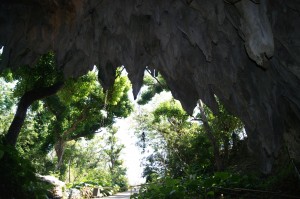 On the southern tip of the main island there are lots of things to see. The Ryukyu glass factory comes highly recommended, as does Okinawa World if you have young children. We went to the Gangala caves and forest opposite Okinawa world (about 15mins drive from the Peace Park), unfortunately we hadn’t reserved a time slot to see the caves (including one particularly renowned stalactite) but it was very pleasant to escape the sun and have lunch in the unusual cave café, umbrellas protecting us from stalactite drips.
On the southern tip of the main island there are lots of things to see. The Ryukyu glass factory comes highly recommended, as does Okinawa World if you have young children. We went to the Gangala caves and forest opposite Okinawa world (about 15mins drive from the Peace Park), unfortunately we hadn’t reserved a time slot to see the caves (including one particularly renowned stalactite) but it was very pleasant to escape the sun and have lunch in the unusual cave café, umbrellas protecting us from stalactite drips.
By this point, having touched on both history and nature, it was time for some modern culture. A little north of Naha is the American Village. I promise we aren’t so bored of Japan that we wanted escape; one of our party was on a mission to find solo cups. Sadly we failed, but if you do want to be transported to America, the Village is reminiscent of San Francisco’s pier 39.
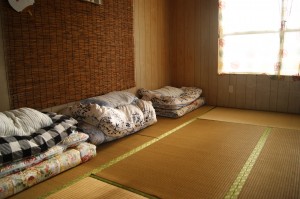 Before we could succumb to reverse culture shock we got back on the road to the northern city of Nago. From Naha the expressway provides really easy access to the north, but if you have a little more time then west coast route 58 is much more picturesque. We arrived in Nago in the early evening and checked into hostel Yanbaru Fukaro, about 2km from the centre of town and five minutes from the beach. It was slightly like staying in someone’s spare room, but a very large airy spare room with comfortable futons and a delightful lack of bunk beds.
Before we could succumb to reverse culture shock we got back on the road to the northern city of Nago. From Naha the expressway provides really easy access to the north, but if you have a little more time then west coast route 58 is much more picturesque. We arrived in Nago in the early evening and checked into hostel Yanbaru Fukaro, about 2km from the centre of town and five minutes from the beach. It was slightly like staying in someone’s spare room, but a very large airy spare room with comfortable futons and a delightful lack of bunk beds.
From my brief visit I don’t think Nago city itself is worth much time, but it’s a great location to explore the north of the main island. We began said exploration by experiencing the other side of island life…Enter the Marines.
Okinawa’s relationship with US armed forces is a tempestuous one. I don’t know enough about the situation to either condone or condemn the military presence, but the officers I met in Nagano over New Year made the most gentlemanly tour guides when we turned up in their stomping ground. After introducing us to the local steak house in central Nago, (Asukaステーã‚ãƒã‚¦ã‚¹é£›é³¥) where we enjoyed a truly excellent four course dinner for 2000円, we were offered a tour of the local base. Never ones to say no to a new experience (or turn down a free lift) we bundled into the car and whizzed up to the affectionately nicknamed ‘Man Camp’, so called for the 4000:12 male to female ratio. Now this may not seem the most sensible decision considering recent altercations down in Okinawa, but having failed to find solo cups in the American Village what choice did we have?
The base was a stark contrast to the rest of the island, with wide spaces and purpose built barracks. It was a far cry from Okinawa’s own ramshackle style. Situated right on the beach, with one sandy strip for drills and another for relaxation the boys have a nice set up. But despite the idyllic location and offices which are not so different from my staff room, the fleet of Humvees and aquatic equipment quickly reminded us where we were. Finally, with some trepidation, we went to the base’s bar. We might have felt uncomfortable being the only girls in a room full of testosterone and muscle, but fortunately, living in Japan we have become accustomed to stares, and so barely noticed the attention our entrance drew. Instead we were able to enjoy seeing the marines in their element: line-dancing. Not two things I would have naturally put together, but with an 11pm curfew the lads are limited to what the one DJ chooses to play. Still, the dance floor was packed and everyone was having fun. Although no amount of cajoling from our friends would succeed in getting us down on the dance floor, we did learn ‘the Cupid shuffle’ from our raised vantage point and will be bringing it to a Kansai club near you soon.
From one marine life to another; our third cloud-free 28°C morning on Sunday took us to Churaumi Aquarium. Famous for its three huge whale sharks I recommend grabbing a bite to eat in the café next to the main tank and letting the sharks and manta rays hypnotize you as they swim round (just don’t assume there’ll be appropriate breakfast food). Afterwards wander the area between the aquarium building and the sea where you can find lots to admire, including a turtle nesting zone. There are several demonstration shows across the aquarium but the best of these has to be the dolphin show, a winner for all ages.
 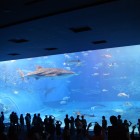
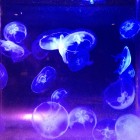
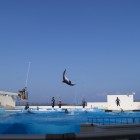
Once you’ve had your fill of aquatic life and posing with the impressive floral replicas, head one kilometre along the coast to Bise, a tiny coastal village whose paths become emerald tunnels as the sun shines through the canopies of the fukugi trees lining each walkway. 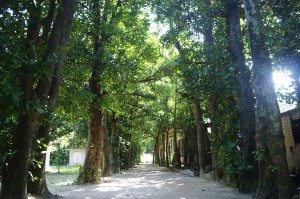 Overshadowed by the neighbouring aquarium as a tourist attraction, Bise is a perfect escape from the tourist hustle and bustle. We happened upon a cafe with the most spectacular ocean view, and that’s saying something in Okinawa! Cahaya Bulan Cafe serves up cakes galore, an impressive selection of fruit smoothies and juices, a delicious Okinawa soba set and truly exquisite Vietnamese coffee. Although we’d eaten in a cave and an aquarium, this seaside cafe was my favourite; the perfect place to relax after a solid three days of tourism.
Overshadowed by the neighbouring aquarium as a tourist attraction, Bise is a perfect escape from the tourist hustle and bustle. We happened upon a cafe with the most spectacular ocean view, and that’s saying something in Okinawa! Cahaya Bulan Cafe serves up cakes galore, an impressive selection of fruit smoothies and juices, a delicious Okinawa soba set and truly exquisite Vietnamese coffee. Although we’d eaten in a cave and an aquarium, this seaside cafe was my favourite; the perfect place to relax after a solid three days of tourism.
Exhausted and very contented, we bade farewell to the Marines and marina and headed back to Naha for the final night. Upon recommendation we went to Yazaemon (ã‚„ã–ãˆã‚‚ã‚“) on Kokusai-dori for delicious sushi. Although we had to wait a while to be seated, the restaurant had a friendly atmosphere and really won our hearts with the restaurant game of janken. I came third, but the head chef took pity and served me up a special plate of tuna as a conciliatory prize. It was so good I then ordered two more, an excellent marketing ploy! After dinner it was time for omiyage shopping and one last tasty Blue Seal ice-cream before hitting the hay. On Monday we said our final goodbyes to the tropics and boarded the plane back to the cold, but Okinawa hadn’t stopped giving yet… as the plane ascended and I looked wistfully down at the blue water below, two humpback whales leapt out of the sea. As they re-entered the water their huge tales splashed one last farewell. Priceless.
Yanbaru Fukaro Hostel, Nago http://yanbaru-hukurou.com/english.htm
http://oki-churaumi.jp/en/index.html
http://www.cahayabulan.com/cafe_CAHAYA_BULAN/Welcome.html
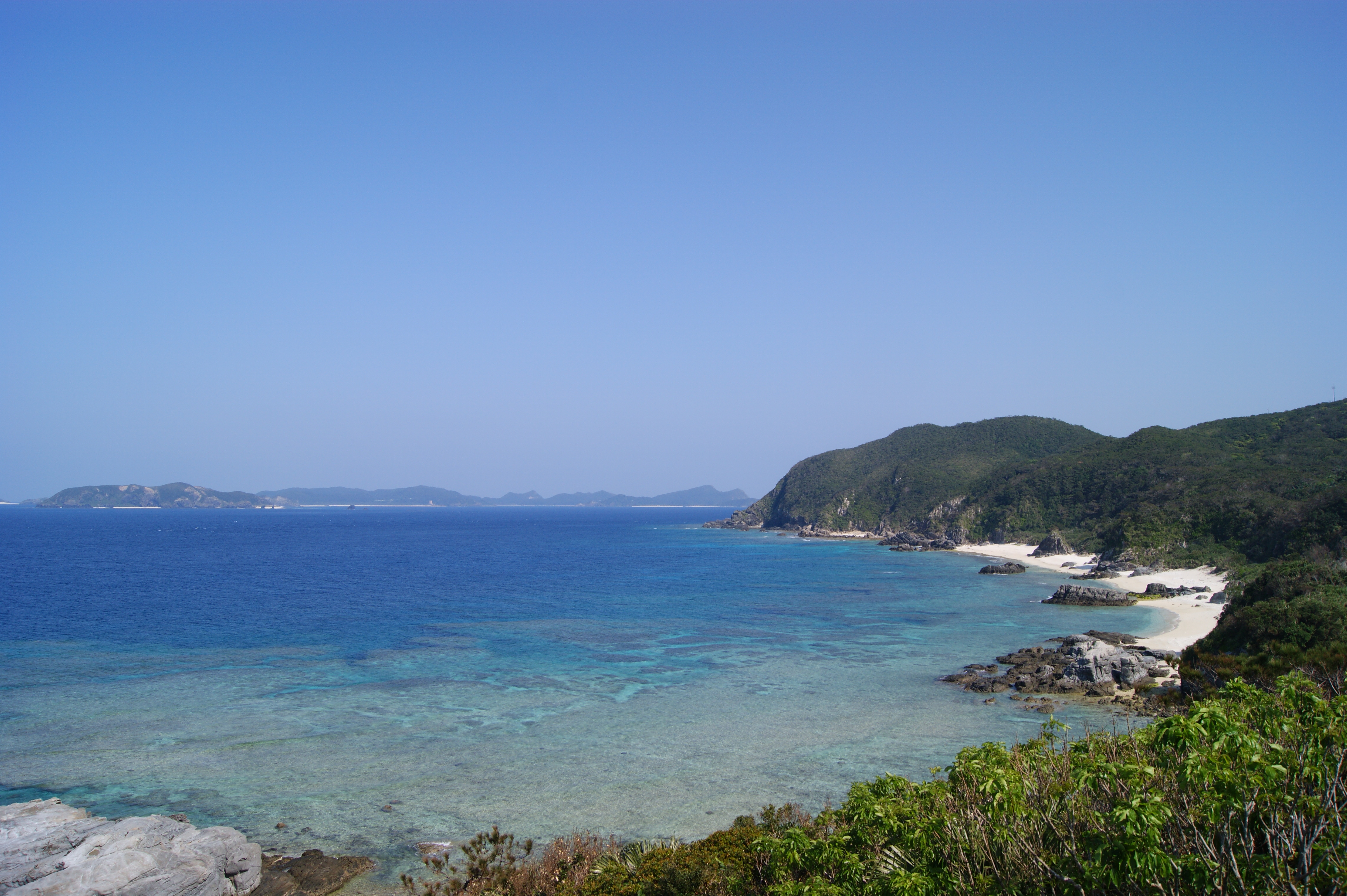
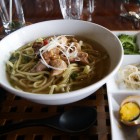
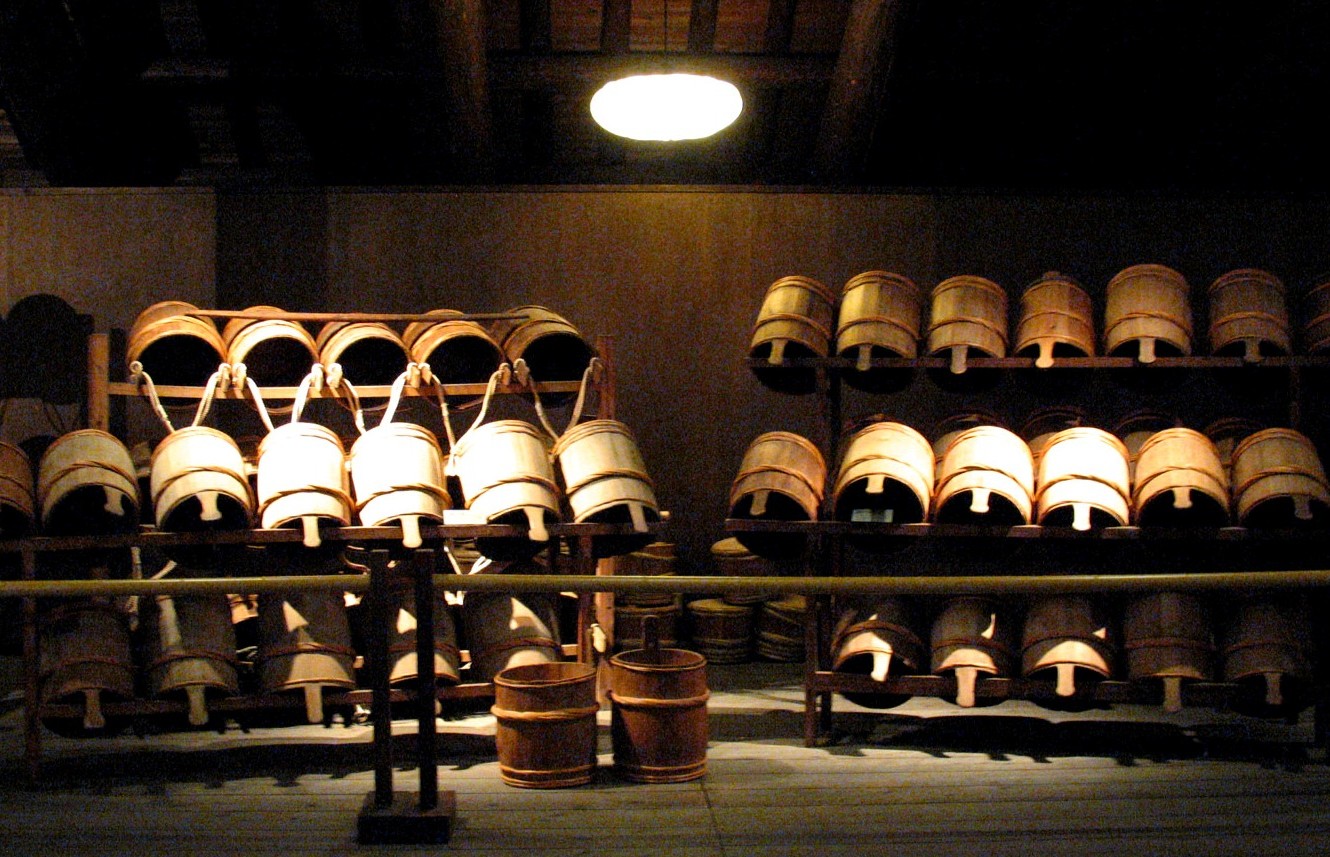
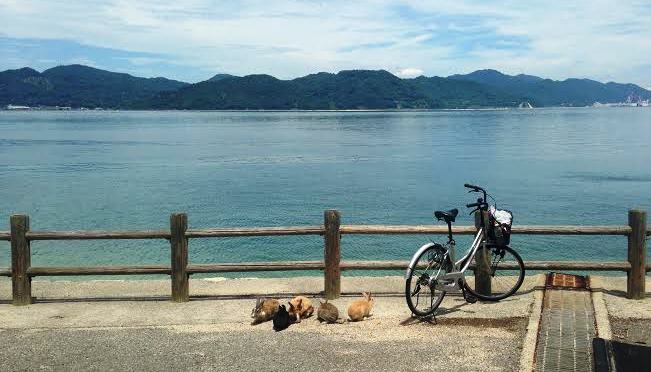




Sounds like you guys had a nice vacation! I brought my family and friends and stayed at the same hostel last summer. We had a great time and spent a while BBQ’ing and just hanging out. Even though we live on Okinawa its nice to get out and stay in a hostel and Saitosan runs a nice place, very relaxing to hang out there. Come back to Okinawa any time you want a taste of the Island life :)